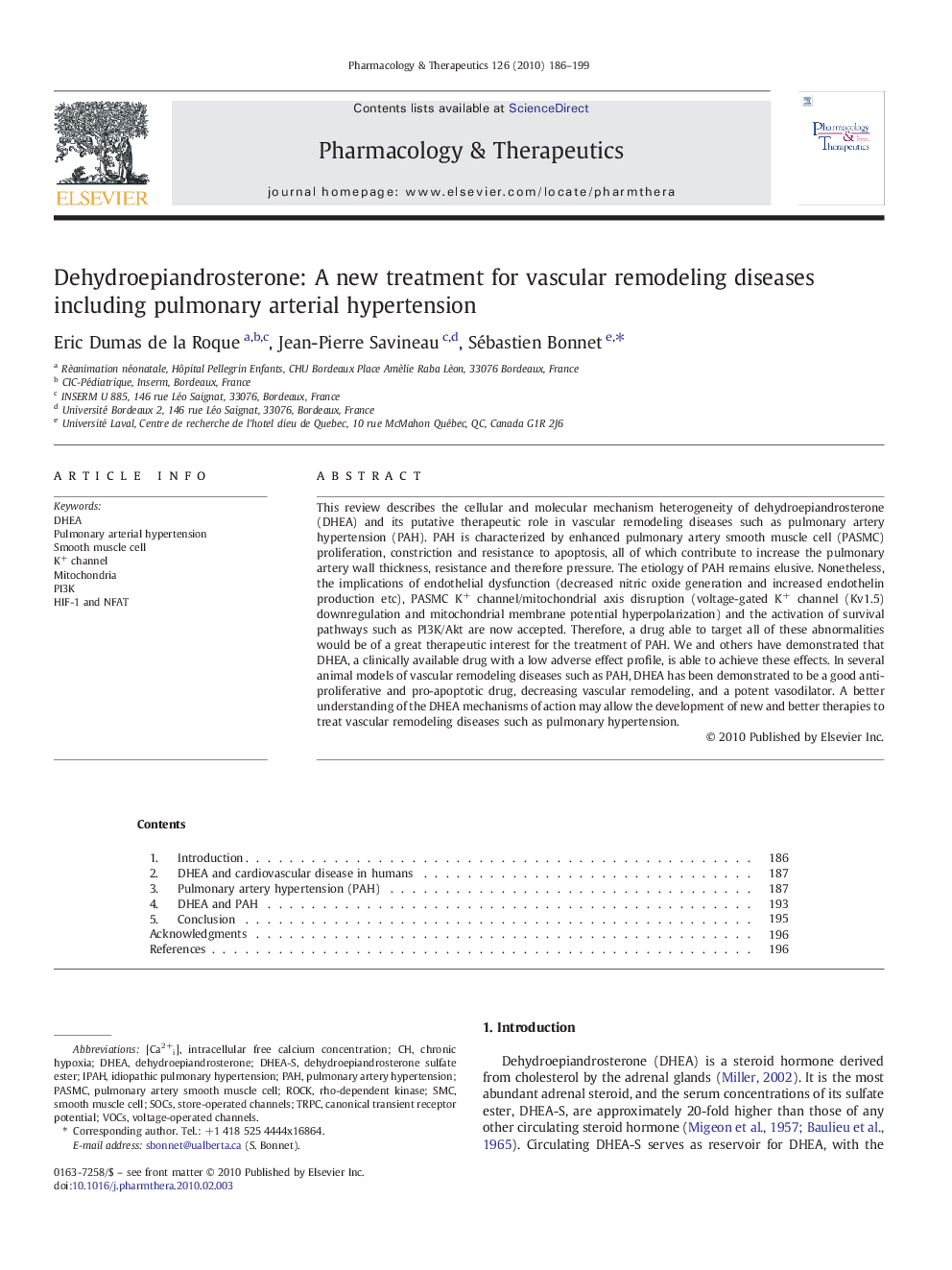| Article ID | Journal | Published Year | Pages | File Type |
|---|---|---|---|---|
| 2564127 | Pharmacology & Therapeutics | 2010 | 14 Pages |
This review describes the cellular and molecular mechanism heterogeneity of dehydroepiandrosterone (DHEA) and its putative therapeutic role in vascular remodeling diseases such as pulmonary artery hypertension (PAH). PAH is characterized by enhanced pulmonary artery smooth muscle cell (PASMC) proliferation, constriction and resistance to apoptosis, all of which contribute to increase the pulmonary artery wall thickness, resistance and therefore pressure. The etiology of PAH remains elusive. Nonetheless, the implications of endothelial dysfunction (decreased nitric oxide generation and increased endothelin production etc), PASMC K+ channel/mitochondrial axis disruption (voltage-gated K+ channel (Kv1.5) downregulation and mitochondrial membrane potential hyperpolarization) and the activation of survival pathways such as PI3K/Akt are now accepted. Therefore, a drug able to target all of these abnormalities would be of a great therapeutic interest for the treatment of PAH. We and others have demonstrated that DHEA, a clinically available drug with a low adverse effect profile, is able to achieve these effects. In several animal models of vascular remodeling diseases such as PAH, DHEA has been demonstrated to be a good anti-proliferative and pro-apoptotic drug, decreasing vascular remodeling, and a potent vasodilator. A better understanding of the DHEA mechanisms of action may allow the development of new and better therapies to treat vascular remodeling diseases such as pulmonary hypertension.
